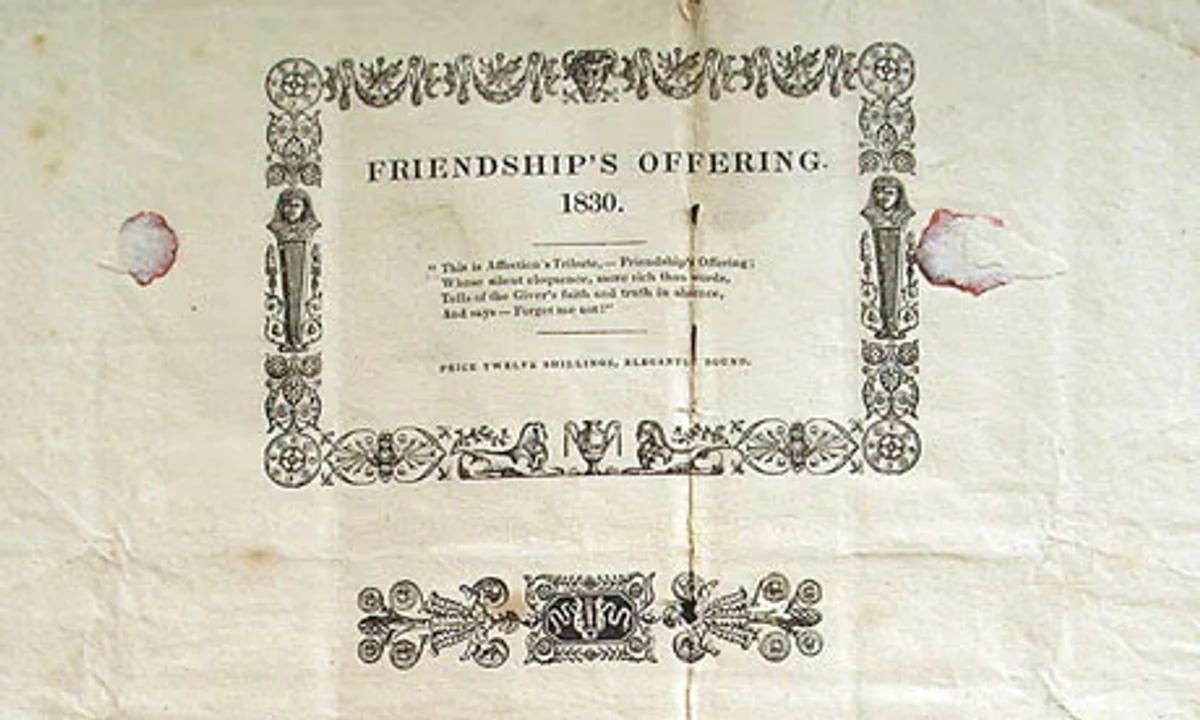Caring for Your Collection: Preserving Literary Treasures and Why Documentation Matters

Every collector knows that moment—when you hold a first edition in your hands, when you discover a signed copy tucked away in an estate sale, when you realize that the book you've cherished for years might be worth far more than you imagined. But with ownership comes responsibility. Your rare books aren't just valuable assets; they're fragments of literary history that deserve proper care and protection.
Every collector knows that moment—when you hold a first edition in your hands, when you discover a signed copy tucked away in an estate sale, when you realize that the book you've cherished for years might be worth far more than you imagined. But with ownership comes responsibility. Your rare books aren't just valuable assets; they're fragments of literary history that deserve proper care and protection.
This week, we're exploring the essential practices for preserving your collection and explaining why professional documentation through Rare Reads isn't just about knowing what your books are worth—it's about protecting your investment for generations to come.
The Foundation: Environmental Control
The greatest threats to your rare books are invisible. Temperature fluctuations, humidity swings, and light exposure silently damage your collection every day. Professional conservators and preservation experts agree: creating the right environment is the single most important step you can take.
Temperature and Humidity: The Golden Rules
Keep your storage area between 65-70°F (or 64-72°F), with humidity levels maintained at a steady 30-50% (or up to 45-60% according to some preservation guidelines). These aren't arbitrary numbers—they represent the sweet spot where paper remains stable, leather bindings stay supple, and mold spores can't gain a foothold.
Rooms with temperature and humidity controls are commonly used in libraries to store older artifacts and can help preserve their condition for a longer period of time. While climate-controlled storage rooms offer ideal conditions, you don't need museum-grade facilities. Look for rooms with minimal windows and exposure to natural elements, and invest in a dehumidifier to keep moisture levels at a low and constant level.
High humidity poses severe risks to rare book collections, with levels exceeding 65% creating ideal conditions for mold growth, leading to permanent damage including staining, weakening, and material disintegration. But don't swing too far in the opposite direction—dry heat causes leather covers to crack and book glue to dry out. A hygrometer (available for under $20) helps you monitor conditions and catch problems before they become disasters.
Light: The Silent Destroyer
Your precious rare books should always be kept out of direct sunlight, as UV rays can cause "sunning"—a chemical reaction in the paper that causes irreversible damage. Even indirect light takes its toll over time, fading bindings and yellowing pages.
Choose storage locations away from windows, or use UV-filtering films if window exposure is unavoidable. If displaying books, rotate displayed books regularly to prevent light damage and use book cradles for open displays. Remember: every hour in sunlight is an hour of damage you can never undo.
Proper Storage Techniques
How you shelve your books matters as much as where you keep them.
The Right Way to Shelve
Books stored on shelves should be placed upright, with a small amount of space between each book to reduce pressure on the binding when removing them. This isn't just aesthetics—it's engineering. Cramming books together damages spines when you extract them. Leaving too much space allows books to lean and warp.
Keep books of the same size together to help avoid indenting that can occur when books of varying sizes are pressed together for a long period of time. A small paperback leaning against a folio creates pressure points that, over decades, leave permanent marks.
Store books upright, not slanted or on top of one another, and use heavy bookends to help keep them in place. For oversized or particularly heavy volumes, store them flat or if you must, on the spine—never with the opening down, as this puts pressure on the binding over time.
Protective Housing
If storing books long-term, carefully wrap your rare books in acid-free paper and tie them with cotton twill tape or ribbon to prepare them for storage, which helps keep moisture and pests out. Avoid newspaper (the ink transfers), regular paper (it contains acid), and plastic bags (they trap moisture).
For your most valuable volumes, invest in archival boxes. Acid- and lignin-free archival boxes or rare book boxes with built-in cradles protect books while providing proper support for viewing. These boxes shield books from dust, light, and physical damage—and they're reusable investments that protect books worth thousands.
Handling Your Books: Myths and Best Practices
Here's where we need to address the white glove elephant in the room.
The Great Glove Debate
Pop culture teaches us that rare books require white cotton gloves. Museums showcase curators wearing pristine gloves while handling ancient manuscripts. It looks professional, careful, protective.
It's also mostly wrong.
According to the Library of Congress and professional conservators, it is generally preferable to handle your books with clean hands, washed with soap and thoroughly dried, rather than with gloves. Why? Gloves reduce your sense of touch, increasing the likelihood that you might accidentally tear a page, smear pigments, dislodge loose fragments—or worse, drop the book.
Cotton gloves are made of tangled fibers that can easily catch on small tears or rough areas in weak and degraded paper and leather, and they hold onto dust and grit, making them abrasive. Gloves also cause hands to sweat, and this moisture can penetrate the gloves to wind up on the books.
The evidence is clear: In their article about the dangers of glove use in reading rooms, Cathleen A. Baker and Randy Silverman could find no scientific evidence that handling paper with bare hands causes chemical damage.
When Gloves ARE Necessary
There are important exceptions. Clean gloves (nitrile, vinyl, or lint-free cotton) are recommended when handling photograph albums or photographs, or books with metal or ivory parts. Gloves are always recommended if there is reason to suspect a health hazard such as mold or arsenic.
The Right Way to Handle Books
Before handling books, make sure your hands are clean and dry. If the book is on a shelf, pull it from its middle instead of reaching for the top of the spine, which in older books is often fragile.
When opening an older book, don't let it sit flat—use items such as other books or clean, dry rolled-up hand towels to prop the sides so that the spine and pages aren't over-stressed and possibly cracked or damaged. Book cradles serve this exact purpose and are worth the modest investment for your most valuable volumes.
Avoid leaving books open, face-down, or stacking them for prolonged periods to reduce strain on the spine. And please, never lick your fingers to help turn pages, and if the paper is brittle, don't turn at the corners as they can easily rip off.
Regular Maintenance and Inspection
Preservation isn't a one-time task—it's an ongoing commitment.
Cleaning and Dusting
Dust, humidity levels, and even chemicals from unfinished wooden shelves can cause damage to books of any age. Dust books regularly with soft brushes and inspect for signs of deterioration monthly.
When cleaning, keep the book closed and use a soft paintbrush to gently brush away dust, working in a clean area to prevent dust resettlement. Never use household cleaners or polishes near rare books—the chemicals can cause irreversible damage.
Monitoring for Problems
Monitor for pest activity and document any changes in condition. Good housekeeping practices and routine inspections of areas where rare books are stored or exhibited will reduce the risk of pest infestation.
Look for these warning signs:
- Waviness in pages (indicates moisture exposure)
- Foxing (brown spots from moisture and mold)
- Loose or cracking bindings
- Insect damage (small holes, frass)
- Musty odors (mold growth)
- Color changes in leather (red rot)
Catching problems early makes all the difference between minor repairs and major losses.
Why Professional Documentation Matters
Here's the truth many collectors don't realize: proper care is only half the equation. Without documentation, you're exposed to risks that could cost you thousands.
The Value of Knowing What You Own
How do you properly insure a collection you haven't fully cataloged? How do you prove ownership if theft occurs? How do executors handle your estate if they don't understand what books are valuable? The answer to all these questions is: with difficulty, inefficiency, and potential loss.
This is where Rare Reads transforms collection management.
Comprehensive Cataloging Made Simple
Rare Reads uses advanced AI and computer vision to identify your books from photographs. Simply snap a photo of the copyright page—that single page contains 80% of the information needed for accurate identification. Within moments, you'll have:
- Complete bibliographic details
- Accurate edition identification (including first edition verification)
- Current market valuation based on real-time data from multiple sources
- Professional condition assessment
- High-resolution photographic documentation
Unlike manual cataloging, which requires hours of research per book, Rare Reads delivers professional-grade documentation in under a minute per volume. For collectors with dozens or hundreds of books, this isn't just convenient—it's transformative.
Appraisals That Stand Up to Scrutiny
Our appraisal system cross-references multiple market sources, including auction results, dealer listings, and historical sales data. Every appraisal includes:
- Market value estimate: What your book is worth in today's market
- Value range: Low and high estimates based on condition variations
- Confidence score: Transparency about certainty levels
- Key value factors: Clear explanations of what makes your book valuable (or not)
The system considers edition, condition, dust jacket presence, signatures, scarcity, demand, historical significance, and provenance. These aren't ballpark guesses—they're data-driven valuations you can trust.
Professional Reports for Real-World Needs
The ability to generate professional PDF reports separates casual tracking from serious collection management. Rare Reads creates insurance-grade documentation that includes:
- Complete bibliographic details with edition notes
- High-resolution condition photographs
- Comprehensive appraisals with price ranges
- Professional formatting accepted by insurance companies
- Date-stamped records for historical tracking
Need to update your insurance coverage? Generate a collection report showing total value and individual items. Dealing with estate planning? Create documentation that helps executors understand and properly handle valuable books. Preparing to sell? Professional appraisal reports increase buyer confidence and support your asking prices.
Collection Analytics That Matter
Rare Reads doesn't just catalog books—it helps you understand your collection as a portfolio:
- Track total collection value over time
- Identify your most valuable pieces at a glance
- Filter and search by author, value, date, or custom criteria
- Organize books into custom collections (by theme, room, significance)
- Monitor how market conditions affect your holdings
For collectors who view rare books as investments, this data is invaluable. For those who collect for love of literature, it's deeply satisfying to see the scope and value of what you've preserved.
The Peace of Mind Factor
Perhaps most importantly, proper documentation provides peace of mind. When your collection is fully cataloged with photographs, condition notes, and current valuations, you know:
- Exactly what you own and where it's located
- What insurance coverage you need
- What your collection is worth if you decide to sell
- What your heirs will inherit and how to handle it
- Whether a dealer's offer is fair
This isn't paranoia—it's responsible stewardship. Collections worth thousands or tens of thousands deserve the same professional management as any other significant asset.
Building a Preservation Routine
The most successful collectors build preservation into their regular routines:
Monthly:
- Dust shelves and books with soft brushes
- Check for environmental issues (temperature, humidity, leaks)
- Inspect for pest activity or unusual odors
- Verify that bookends and supports remain stable
Quarterly:
- Review storage conditions in detail
- Inspect high-value books for condition changes
- Update condition notes for any books showing deterioration
- Rotate displayed books to new titles
Annually:
- Generate fresh appraisals for valuable books (markets change)
- Update insurance documentation with current valuations
- Consider professional conservation for books showing problems
- Review and update your cataloging system
- Photograph any new acquisitions
As Needed:
- Research professional conservation for damaged books
- Consult with rare book dealers for specialized questions
- Join collector communities for knowledge sharing
- Attend book fairs and auctions to understand market trends
When to Seek Professional Help
Professional conservators suggest seeking professional help when book value exceeds $1,000, structural damage is present, mold contamination occurs, complex repairs are needed, or historical significance warrants expert care.
Most conservation advice warns: do not repair books or paper using adhesive tape, glue, or similar approaches, as most tapes and glues will leave a residue that further damages the material, and some tapes yellow with age. Amateur repairs often cause more harm than the original damage.
For valuable books, preservation specialists emphasize that professional conservation costs, while significant, often represent a fraction of a book's total value and potential appreciation.
Conclusion: Care and Documentation Working Together
Proper physical care preserves your books. Professional documentation protects your investment. Together, they ensure that the literary treasures you've collected will endure—properly maintained, accurately valued, and thoroughly documented.
Every rare book has a story. The edition history, the provenance, the journey from publisher to your hands. But there's another story equally important: how you preserved it, how you protected it, how you ensured it would survive for the next generation of readers and collectors.
Rare Reads exists to help you tell both stories. The platform handles the complex work of identification, research, and valuation, giving you more time to focus on what matters: caring for your books and enjoying your collection.
Start with a few of your most valuable volumes. Photograph them, catalog them, and generate professional reports. Experience how satisfying it is to have comprehensive documentation. Then expand to your full collection, building a complete archive of what you own and why it matters.
Your books deserve professional care. Your collection deserves professional documentation. Rare Reads makes both achievable, whether you're managing a dozen treasured volumes or a library of hundreds.
Visit rarereads.app to start documenting your collection today. Because knowing what you own is the first step in preserving it properly.
Have questions about caring for specific types of books? Need advice on conservation challenges? Join our collector community or reach out to our team—we're here to help you protect the literary treasures you've worked so hard to collect.
Topics
Related Articles

The Paper That's Worth More Than Gold: Understanding Dust Jackets in Rare Book Collecting
A first edition of *The Great Gatsby* without its dust jacket sells for around $1,000-$2,000. The same book with an original dust jacket in fine condition? Anywhere from $20,000 to $500,000, depending on condition. That fragile piece of paper wrapped around the book is worth 20 to 250 times more than the book it protects.

The Treasure Hunt: Incredible Book Finds in the Most Unexpected Places
Every book collector dreams of it. You're browsing through dusty stacks at a garage sale, thumbing through boxes at Goodwill, or scanning shelves at an estate sale when your eye catches something. A familiar spine. An interesting cover. You pull it out, examine the copyright page, and your heart starts racing. You've found something valuable—maybe worth hundreds, possibly thousands—and it's priced at a dollar or two.

The Future-Proof Collection: 20 Modern Books to Acquire Now
Book collecting has entered a remarkable inflection point. As artificial intelligence floods the market with generated content and self-publishing platforms democratize distribution, a fascinating paradox emerges: traditionally published, human-authored first editions from our current era may become exponentially more valuable than we anticipate.
Start Building Your Collection
Use Rare Reads to catalog, appraise, and track your rare book collection
Get Started Free